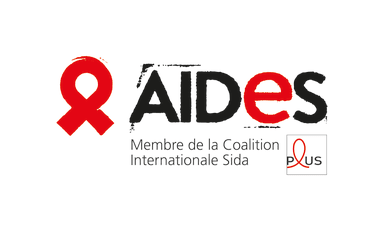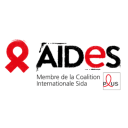Protect yourself from HIV
With AIDES association
 Proposed by AIDES Updated on 5 місяців тому
Proposed by AIDES Updated on 5 місяців томуThere are many ways to protect yourself and others from HIV infection .
Depending on the timing, sexual practices, and frequency, one tool may be preferred or more suitable than another. It's important to be aware of all the available solutions!
Why is it interesting?
The external condom:
A condom is a "piece of latex," but not everybody knows how to use it properly and sometimes people put it on incorrectly. And a condom that's used incorrectly means a less comfortable condom, one that's too tight (or not tight enough), and therefore a condom that's more likely to slip off or break.
The internal condom (Femidon):
This condom is a soft, wide sheath. It has a flexible ring at each end. It is inserted into the vagina or anus and lines the walls. It can be used by people with latex allergies.
Don't call it a female condom, since it can be used by gay men during anal sex. It can be inserted several hours before intercourse. However, you must change the condom every time you change partners.
You can buy it in a pharmacy or get it for free:
- with associations fighting against AIDS, including AIDES,
- in certain CEGIDD (Free Information, Screening and Diagnostic Centers),
- in the branches of Family Planning and sexual health centers.
In which cases should emergency treatment be taken:
In case of:
- breakage, slippage, non-use of condom,
- injury or cut with an object soiled with blood or semen
- sharing drug injection equipment or straws (sniffing).
This treatment can prevent you from becoming infected with HIV.
It is also sometimes called "emergency treatment" or "prophylactic treatment." This is not the time to panic, but to act.
Emergency treatment involves taking triple therapy (medical treatment with three different drugs at the same time) for one month.
It helps prevent possible contamination by immediately blocking HIV replication. It is effective when this treatment is started very early: if possible within 4 hours of exposure to the risk, and preferably before 24 hours and at the most within 48 hours .
If you are exposed or fear a risk, you can contact the AIDES association or Sida Info Service. A person will conduct an initial risk assessment before providing the address of the nearest emergency service.
If possible, it's best to bring your partner with you, as this will make it easier for the doctor to assess the risk. If your partner is HIV-positive, it's a good idea to bring their latest blood tests.
PrEP (Pre-Exposure Prophylaxis) is for people who do not have HIV. You take a medication as a preventative measure to avoid infection. Several studies have proven its effectiveness and show that when the medication is taken correctly and as directed, the risk of contracting HIV is minimal.
This treatment must be prescribed by a doctor and requires monitoring (STI screening, verification of drug tolerance, etc.).
If you have any problems accessing PrEP, contact AIDES by email: prep@aides.org
For more information, see prep-info.fr. There is also a Facebook group called Prep'Dial. To learn more about PrEP abroad, see prepwatch.org and prepineurope.com
HIV antiretroviral treatment is intended for people who have HIV: when an HIV-positive person has been taking their treatment correctly for at least 6 months, the amount of virus decreases very sharply and the viral load becomes "undetectable" in their body.
This eliminates the risk of transmission, even during intercourse without a condom.
For more information, see www.aides.org
To avoid contamination by HIV or hepatitis B and C, it is necessary to use single-use equipment:
- "Roule ta paille" notebooks for snorted drugs,
- syringes for injection,
- other equipment for injection.
All these tools are available at AIDES and in the CAARUD (Reception and Support Centers for the Reduction of Risks for Drug Users). There you can discuss consumption and risk reduction.
Respect, independence, confidentiality and non-judgment are principles/values that are important to AIDES and which allow, among other things, to speak freely in a warm and caring environment.
Our activists are available for sexual health interviews to discuss with you:
- the modes of contamination with different STIs
- your level of exposure to risk
- ways to protect yourself adapted to your needs and your practices.
How to do it?
You can contact us directly at one of the 70 mobilization locations at www.aides.org or by phone, on social media (or possibly by mail if it's not an emergency). Don't hesitate to look at the map below to find the nearest AIDES office.
12 contributors mobilized
 xavidum
xavidumAdmin
 diplosamTranslator
diplosamTranslator basheer al ghothaniTranslator
basheer al ghothaniTranslator olga b.Translator
olga b.Translator noorTranslator
noorTranslator kim.delaunayTranslator
kim.delaunayTranslator sheilaoiseTranslator
sheilaoiseTranslator rohullah expertTranslator
rohullah expertTranslator niknameTranslator
niknameTranslator marianneukraineTranslator
marianneukraineTranslator anastasiaTranslator
anastasiaTranslator aidesWriter
aidesWriter
